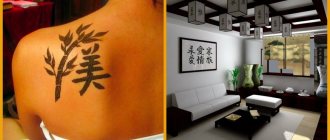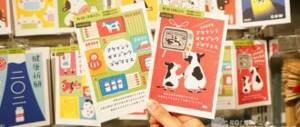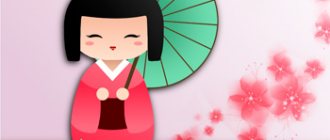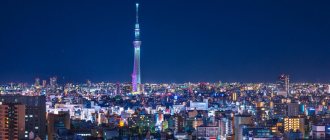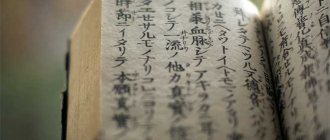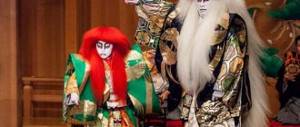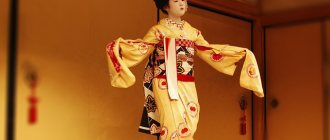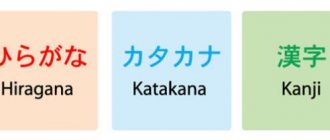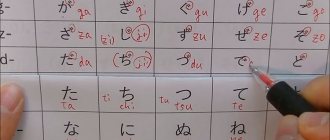New Year in Japan For more than a hundred years, it has been celebrated according to the Gregorian calendar - January 1.
history of the holiday
For many centuries, it was customary to celebrate the Japanese New Year at the beginning of spring; the date was floating and determined according to the lunar calendar. This order of things remained until 1873, when the Meiji Revolution occurred; as a result of reforms, the date was moved to January 1.
The celebration lasts from December 29 to January 4. During this period, business activity slows down, work at enterprises is suspended, and everyone is caught up in the holiday bustle.
Admire the festive illuminations.
In fact, many cities in Japan organize illuminations for Christmas, but in recent years it has been so popular among the population that many places extend the opportunity to admire the beautiful lights until at least the beginning of January, or even until the first days of April. Top places in many Japanese rankings are often occupied by Kobe (Kobe Luminarie), Lake Sagami (Sagamiko Illumillion), Ashikaga (Ashikaga Flower Fantasy). In each of these places you can enjoy a stunning array of several million colored lights covering large areas. Isn't it a fairy tale?
Preparation, cleansing ritual
The Japanese pay great attention to cleanliness. On December 13, in accordance with ancient traditions, general cleaning is carried out. The home is thoroughly cleaned so that the Shinto god Tosigami does not pass by, and good luck and prosperity are always in the house. The ritual is called susu harai , after which a kadomatsu composition is installed in front of the entrance to the house.
Before December 31, it is customary to pay off debts, prepare a festive table, take furo, and dress beautifully. Children should wear kimonos in light colors, adults - dark ones. Children under twelve years old must celebrate the holiday in new clothes.
Marunouchi
The closest light show to the city center is held on the Marunouchi shopping street, which is known for its Western style. Local Christmas celebrations each year offer an enviable variety, from a wall projection projected onto a century-old building (which was once canceled due to noisy crowds!) to an outdoor exhibition of unique moving figures. Marunouchi Street is a great place to buy luxurious gifts or drink a cup of hot coffee in one of the best cafes in the capital. And at the nearby Tokyo International Forum, you can catch a themed three-hour show with lasers, dancing and projection. It's okay if you don't make it in time for its opening: it will run for another ten days until the end of December!
Holiday attributes
Father Frost
Hoteyosho is traditionally considered Santa Claus . Everyone without exception, children and adults, asks him for happiness and good luck. Segatsu-san and Oji-san also appeared relatively recently . The first character does not give gifts (this is the responsibility of the parents). He is busy congratulating people in their apartments. Before his arrival, a low gate made of pine branches and bamboo is built in front of the house. Near the houses of wealthy Japanese there are dwarf pine, peach and plum trees.
Segatsu-san
Motibana
Mochibana is almost ikebana, only it is usually done on New Year’s Eve; home decoration is considered one of the most ancient Japanese traditions. The Japanese place bamboo or willow branches throughout their homes and hang figurines of plants, flowers, fish, and fruits on them. This ritual is associated with attracting the spirit of the holiday. If you manage to create the atmosphere necessary for it, then there will also be prosperity in the house throughout the next year.
Kadomatsu
In the Land of the Rising Sun, instead of a Christmas tree, they decorate a pine tree. To be more precise, it is a craft made from rice straw, bamboo, pine, decorated with ferns and tangerines. In coastal regions, kadomatsu is additionally decorated with seaweed and shrimp.
Fortune telling at Sensoji Temple in Asakusa
You can’t visit Japan without trying to tell fortunes and draw a piece of paper with the “omikuji” fortune. This can be done at all temples in the country, and Sensoji is the oldest Buddhist temple in Tokyo. On its territory there is the Asakusa Shrine, which, despite American bombing during World War II, survived and is a valuable architectural monument.
You pull out a special stick with a hieroglyph, which you will need to find in a special row of boxes. There you will find a piece of paper with the prediction and its translation into English. They say that what is written comes true.
Traditions and customs
A holiday is a time of different rituals. Countless fairs are opening across the country. Almost everything is sold there: from small souvenirs to food and clothing.
Traditional attributes:
- hamayimi - arrows to protect the house from evil spirits;
- takarabune boats - they are filled with lentils; it is believed that deities of good fortune live in such vessels;
- Daruma is an eyeless wish doll - its owner makes a wish and draws one eye, the second can be completed when the wish comes true, if this does not happen, the doll is burned in a traditional bonfire the next New Year;
- kumade - an amulet, which translates as a bear's paw, is shaped like a rake to attract happiness.
The signal announcing the arrival of the holiday is considered to be 108 strikes of the bell, which sound exactly at 12 o'clock. According to ancient Japanese belief, his blows herald deliverance from vices. There are a total of 6 vices in Japanese culture, each with 18 shades.
When the ringing of the bells subsides, thousands of Japanese come out into the squares and streets. There is a belief that in these morning hours the deities of happiness swim to the shores of the Land of the Rising Sun. They all have a complex name, each personifying one of the positive traits. On the 2nd, the kaki-zome , during which a lucky hieroglyph is written.
Visit onsen hot springs in the mountains
Ski resorts often offer more than just active sports. Here you can find a way to relax. Hot springs (onsen) will be much more pleasant to take in the snowy mountains than, for example, in Odaiba, where, due to the popularity of the place, there are a lot of foreign tourists.
Onsen is the perfect way to warm up and relax after an active day in the frosty air. Mineral water from the source has a positive effect on health, relieves stress, and the nature around you allows you to find harmony. Believe me, it's so great to sit in a bath with hot mineral water in the open air and admire the snowy landscape around.
By the way, not only people love thermal springs in Japan. The wild monkeys in Nagano Prefecture are very famous all over the world for their love of warm water! When you watch them bask in the warm water, you immediately want to join them. Monkeys are not afraid of people, but you should be careful about your belongings.
Feast
After ringing the bells and visiting the temple, many return home to try traditional Japanese food - o-sechi . The dish is an integral attribute of the New Year's table; its peculiarity lies in its presentation - in three different boxes (jubako) different ingredients are placed, carefully selected according to their taste properties. It could be a vegetable, fish, egg roll, all components symbolize a certain New Year's wish.
Initially these dishes were intended for deities, this food also attracts prosperity to the family. Each ingredient symbolizes something, all dishes are prepared in such a way that they remain fresh for as long as possible and do not spoil.
If earlier o-sechi was prepared from simple ingredients, then recently there has been a tendency towards complexity. All dishes can be bought at the supermarket, so many young Japanese women don’t even know how to cook o-sechi themselves.
Mochi is considered a traditional New Year's dish - boiled rice cereal is placed in wooden containers made in the shape of a basket. To prepare, you need two people - one pours water on the rice, the second hits it with a wooden hammer. As a result, a sticky mass is formed; the traditional dish is prepared in advance and eaten in early January. Eating long soba rice noodles should attract happiness; it symbolizes a long, carefree life and health. Eating noodles after 12 is not recommended - there is a belief that it can bring bad luck. Japanese sake vodka is considered a traditional New Year's drink.
On the morning of January 1, they eat zoni soup , after which everyone goes to the temple.
In Japan, it is customary to celebrate the New Year with family, a feast, or Omisoka no Eru, which occurs on the last day of December. The event is not associated with laughter and fun. On this day they think about the eternal, remember the events of the past year. A modern Japanese holiday still involves watching programs on TV.
New Year's table
The festive feast in Japan takes place in the family circle - modestly and discreetly, without long toasts and lively conversations. During dinner, everyone is immersed in their thoughts about the past and the coming year. The New Year's menu may vary depending on the region of the country. Traditional dishes - osechi reri: mashed sweet potatoes with chestnuts, sweet black soybeans, fish pies, boiled seaweed, herring caviar, dried anchovies with soy sauce, sushi and sashimi. For dessert, the hostesses serve sweet chestnut puree and fish omelette with sugar. The New Year's table includes mochi - round loaves or flatbreads. They symbolize prosperity and harvest next year.
Mass celebrations
New Year is considered a family holiday, so many residents of big cities go to their native places. At this time, everyone goes to churches and prays for their family and friends. Noisy mass celebrations as such are not held in Japan. They are replaced by pre-holiday fairs, where you can buy gifts and everything you need to celebrate the holiday.
On New Year's Eve, all entertainment venues are closed. The holiday is usually not celebrated in restaurants. In megacities, young people come to central areas and celebrate the holiday right on the street. You can also celebrate the holiday at the foot of the mountain on a ski holiday. Usually people unanimously count down the passing year by seconds, after which fireworks are launched.
Visits to relatives and friends occur in the afternoon of January 1st; to express respect, it is enough to leave a business card on a tray displayed at the entrance to the house.
Greet the Emperor
Every year, on January 2, anyone can enter the territory of the Imperial Palace in Tokyo. This is a unique opportunity to see the Emperor of Japan and other members of his family. Every year, several tens of thousands of people come to greet the monarch and listen to his New Year's address.
If you find yourself in Japan for the New Year holidays, you should definitely take advantage of this chance, because it is possible to see the emperor only 2 times a year, and January 2nd is one of them!
Shopping extravaganza: Shinjuku, Harajuku, Shibuya
How would Christmas be complete without the bright and crowded shopping malls where Japanese people scour for sales and discounts on gifts? Some of Tokyo's famous stores, such as Lumine (Shinjuku), Omotesando Hills (Harajuku) and Parco (Shibuya), offer dozens of exciting experiences for shoppers. Here you can buy unique souvenirs, enjoy Christmas dinner, listen to a live choir, or simply stroll through the lavishly decorated “cities within cities”! Children will be very happy to hug Santa Claus himself and receive a small gift from him. And outside these malls you'll see even more holiday lights - like on South Terrace; in the garland tunnel that leads to the western exit of Shinjuku Station; all along Omotesando Street, as well as literally on every corner in Shibuya.
Odaiba
Here you will find Tokyo's largest Christmas tree, which is located in front of the themed Rainbow Bridge. Various festive events are held in the Venus Fort and Diver City shopping arcades, with Christmas lights installed everywhere. Couples also flock to Odaiba. Venus Fort is especially suitable for a romantic walk, its interior is decorated in the style of medieval Italy. But the most popular on Christmas Eve is the Ferris wheel (Palette Town). The line of young people wanting to ride the gondolas with their significant other will be the longest you've ever seen!
